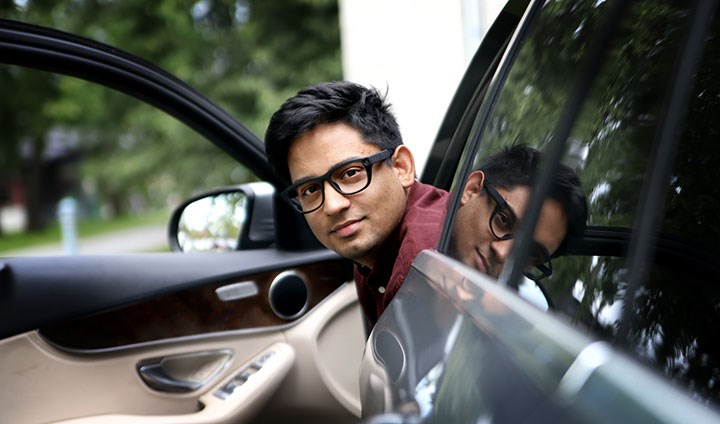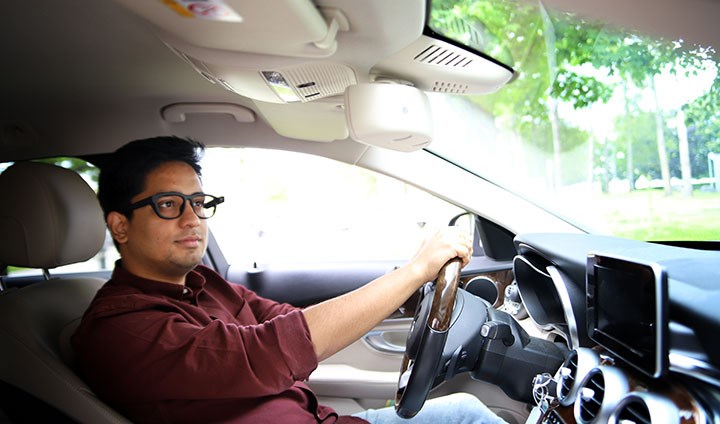AI and eye tracking may help doctors make difficult patient decisions

Doctoral student Ravi Chadalavada came up with the idea of using AI and eye tracking for more efficient driving education while participating in a workshop at Örebro University’s innovation office, ORU Innovation. The idea that doctors could use the system is a new application: “Today, there’s no sure way to assess how much a disease affects a patient’s ability to drive”.
Doctors could get an objective report to make better decisions about patients’ medical fitness to possess a driving licence using artificial intelligence and eye tracking. This is the goal of the new AI project Dash at Örebro University.
“It’s important to keep the human aspect in mind so that those who don’t have to give up driving shouldn’t be forced to do so either,” says doctoral student Ravi Chadalavada.
The regional development project AI.ALL is coordinated by AI Impact Lab at Örebro University and carried out in collaboration with Region Örebro County and Alfred Nobel Science Park. The project is funded by the European Regional Development Fund, Region Örebro County, Örebro University, Epiroc and Saab.

Doctors are obligated to report to the Swedish Transport Agency if their patient is deemed unfit to drive due to illness, age, or cognitive impairment. It is a problematic assessment since, in some cases, the doctor does not know how much a particular condition affects the patient’s driving ability.
Dash – Driving Assessment in Healthcare – is being launched as a pilot project within AI.ALL, a regional development project at Örebro University. Dash aims to facilitate a doctor’s assessment using artificial intelligence and eye-tracking technology to collect data on a patient’s driving.
“Doctors can make their assessment based on actual data”
“Today, there’s no sure way to assess how much a disease affects a patient’s ability to drive, which is a problem in healthcare. Some doctors may feel it’s cruel to revoke a driving license from a patient who’s been driving all their life. Hospitals use questionnaires and simulators to assess driving performance. Still, when we interviewed healthcare professionals, we learned that there’s much room for improvement,” says Ravi Chadalavada, a doctoral student at the School of Science and Technology, and continues:
“Our system could be a good tool to address the shortcomings of existing solutions. By allowing the patient to drive and wear our glasses, we can generate a report so doctors can make their assessment based on actual data.”
Ravi Chadalavada has been working on an innovation that will make learning while driving more efficient for several years. His innovation is to learn AI our traffic rules and combine it with eye tracking. The work has been carried out with a team consisting of Professor Achim Lilienthal, researchers Henrik Andreasson and Sai Krishna, and Professor Maike Schindler from Cologne.
Along the way, it turned out that there may be an application of innovation in healthcare.

AI.ALL allows researchers to test their innovations together with industry
Dash is part of a larger project, AI.ALL. The aim of AI.ALL is twofold. First, to allow researchers to validate and apply their ideas in artificial intelligence by working together with industry and the public sector. Secondly, to help industry and the public sector accelerate their use of AI. In total, AI.ALL will test ten cases or subprojects over the next two and a half years.
“We bring in subprojects on an ongoing basis. It’s great that we are up and running with Dash, our first case. Each case is expected to be highly innovative in terms of AI and developed in close cooperation with regional actors and companies. These cases should have rapid development cycles, which can lead to new innovations. That’s why we work in close collaboration with Örebro University’s innovation office, ORU Innovation,” says Anna Töndel, who works at AI Impact Lab and is project coordinator for AI.ALL.
Dash will continue for seven months, concluding in March next year. The project is carried out in collaboration with the Geriatric Clinic at USÖ, the Swedish Transport Administration, the National Road and Traffic Research Institute, and two traffic schools, one in Örebro and one in Umeå.
“It’ll be exciting to see how we can use the system in healthcare since it’s a new application. It’s still up to doctors to make their decision, but with the help of an AI system, doctors are provided with an intelligent tool to produce data to make an objective assessment. I hope that it’ll lead to increased road safety and contribute to the zero vision in traffic. It’s important to keep the human aspect in mind so that those who don’t need to give up driving aren’t forced to do so either,” says Ravi Chadalavada.
Text and photo: Jesper Eriksson
Translation: Jerry Gray
